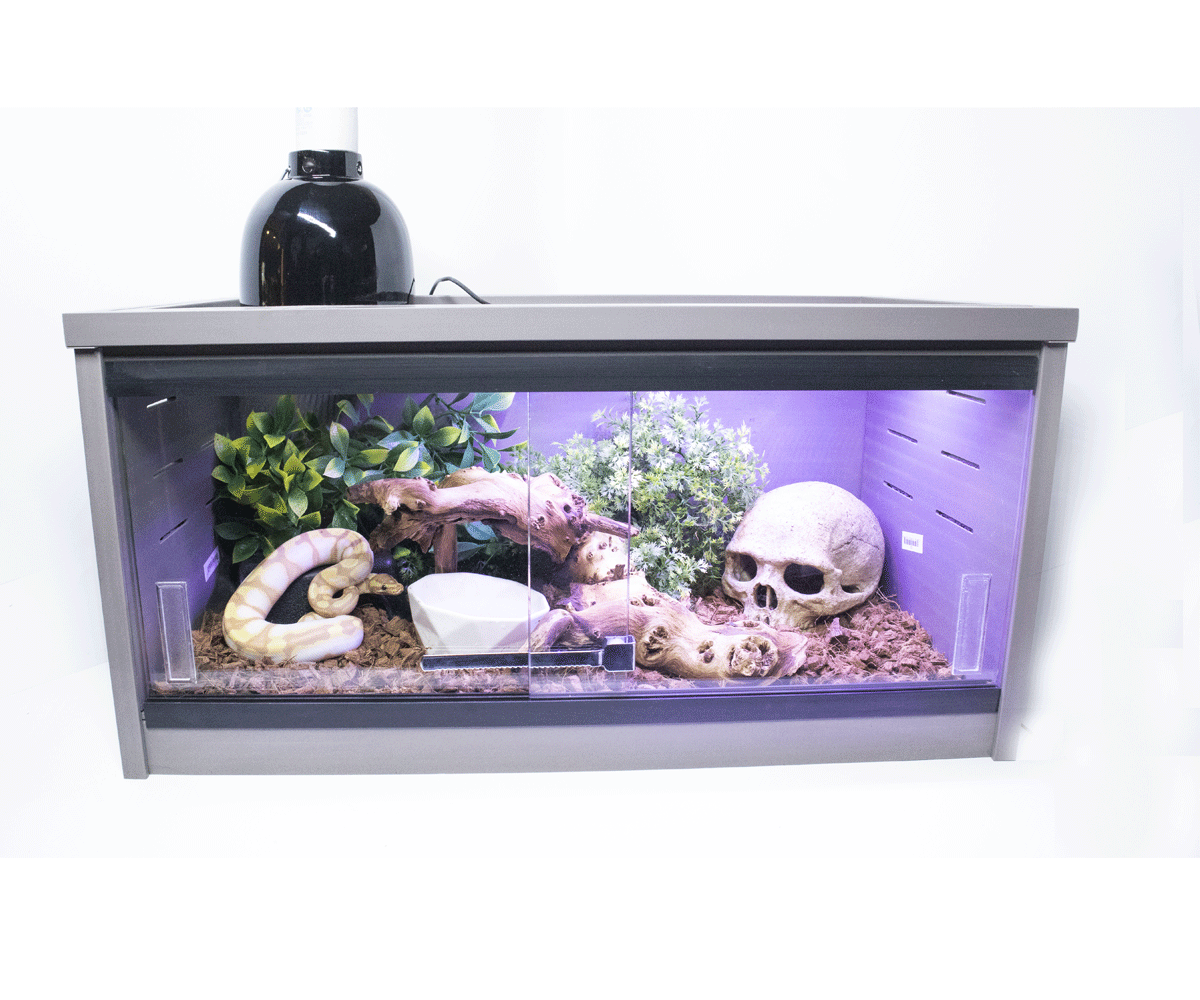5 Steps For Ball Python Care
Step 1 Choosing An Enclosure
So first before you purchase a ball python you should have it’s enclosure set up, with temperature and humidity dialed in.
Pro tip Do not place enclosure in front of or close to a window. Windows can have drafts and unwanted sunlight that can over heat your enclosure and cause temperature fluctuations.
So, what enclosure to get? Well, we prefer a front-opening enclosure if possible that way you’re not bothered with moving the lighting equipment around every time you’d like to handle or feed your snake and in general are more secure and your snake is less likely to escape. For hatchlings to juveniles we suggest an enclosure around 24”x12”x12” and plan to upgrade to a 36”x18”x18 or 48”x24”x18” once your snake has reached young adult size (1000grams).
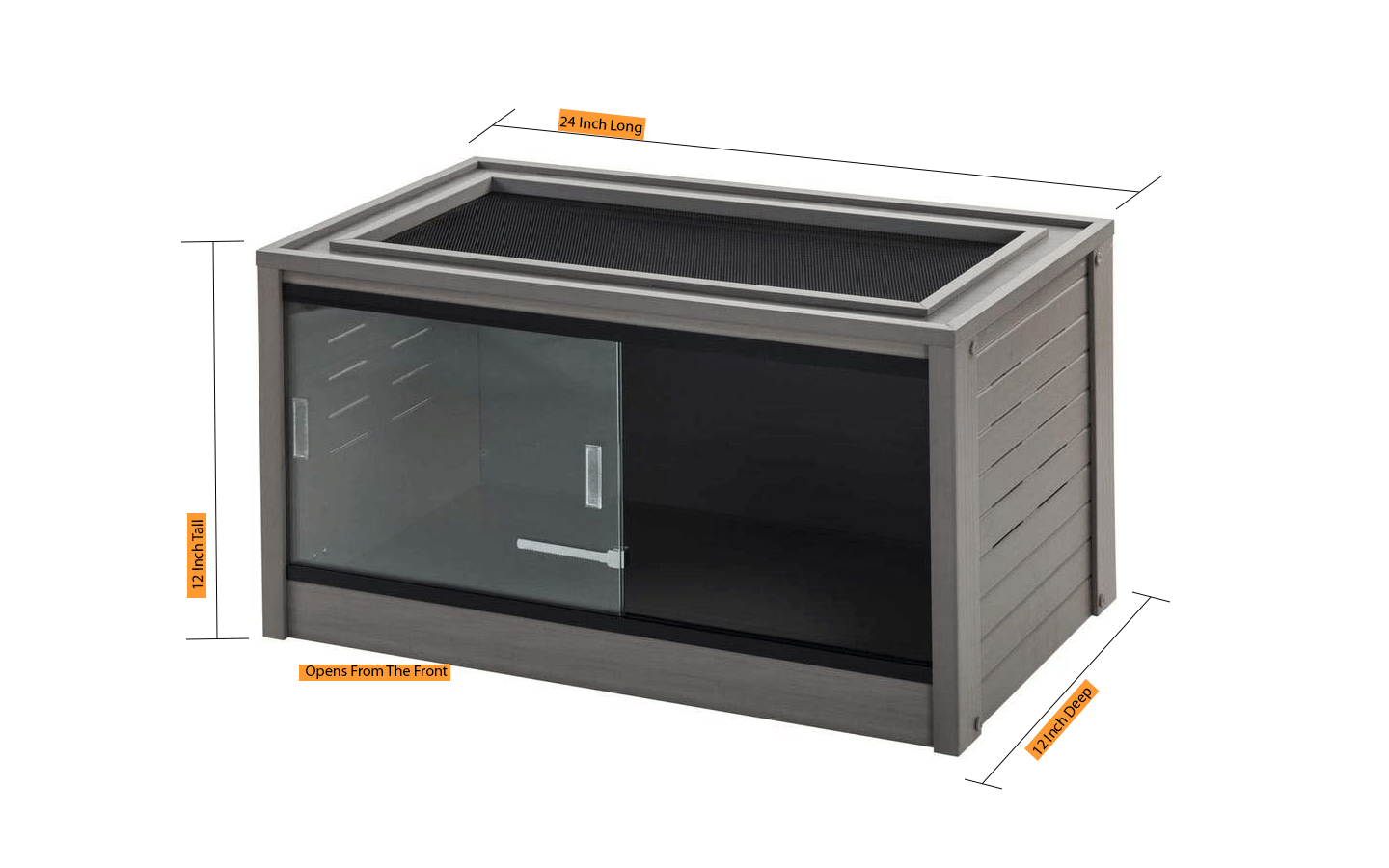
Step 2 Heating And Lighting
Ball pythons are “cold blooded” meaning they rely on the temperature of their environment to regulate their body temperature and metabolism. This is important if temperatures and humidity aren’t maintained your snake will not shed correctly and may stop eating. We as keepers must provide them with a temperature range around 95-100 degrees on the hot side of the enclosure and about 72-80 degrees on the cooler side of the enclosure during the day and about 72-78 degrees at night. There are a few ways to achieve this but the simplest way we have found is to use a 60-100watt CHE (Ceramic Heat Emitter) bulb
(depending on enclosure size and Ambient room temperature) placed on one side of the enclosure and a led light for day lighting.
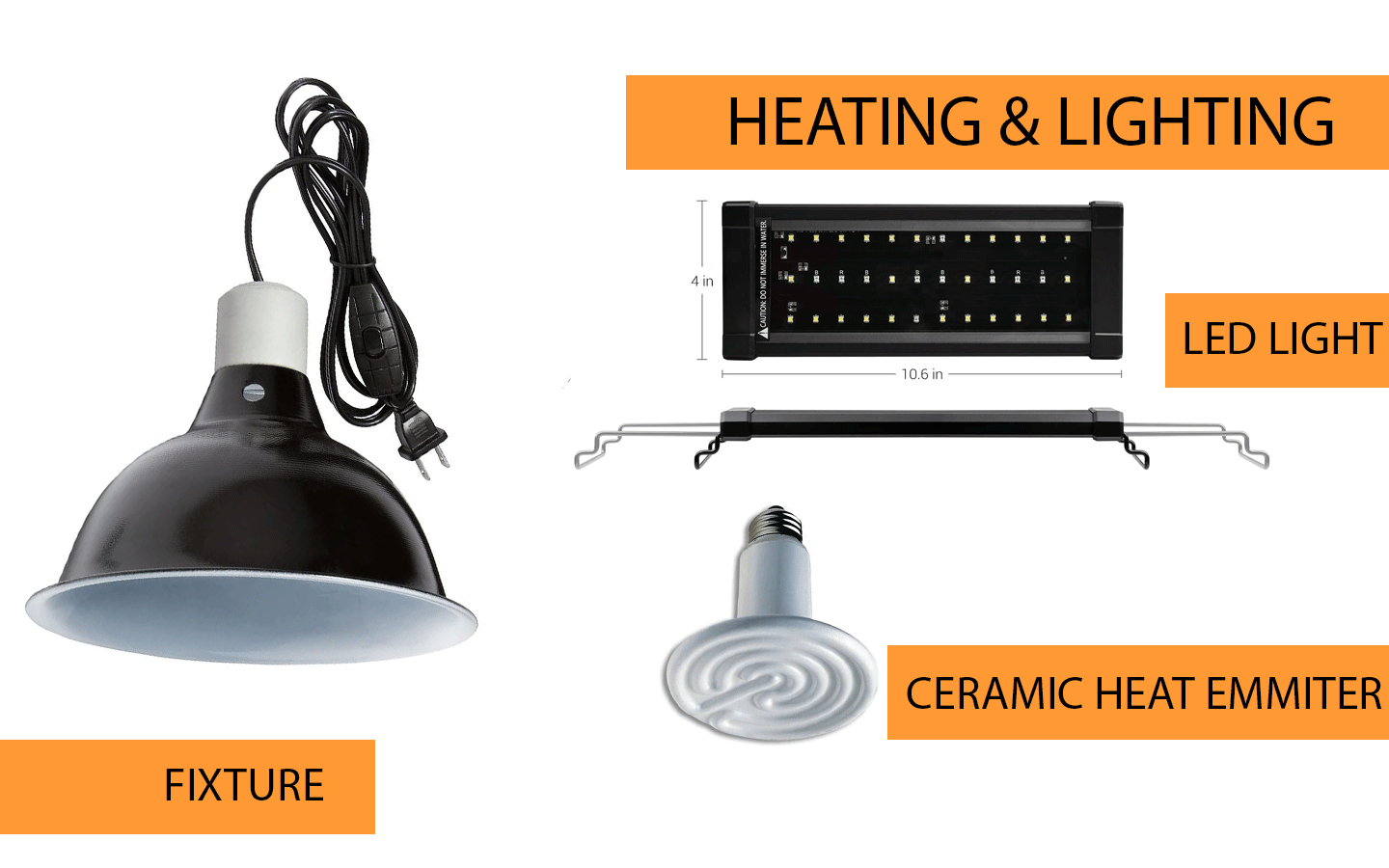
Step 3 Substrate And Decore
So we have found one of the best substrates/ground cover for ball pythons is coco bark. It’s affordable, helps maintain humidity and looks good! You’ll also need to provide your ball python with a water bowl preferably big enough so that they may soak in it and two hides one on each side of the enclosure so that they can regulate their body temperature and still feel secure. You may also provide logs and plastic plants but it isn’t a Necessity.
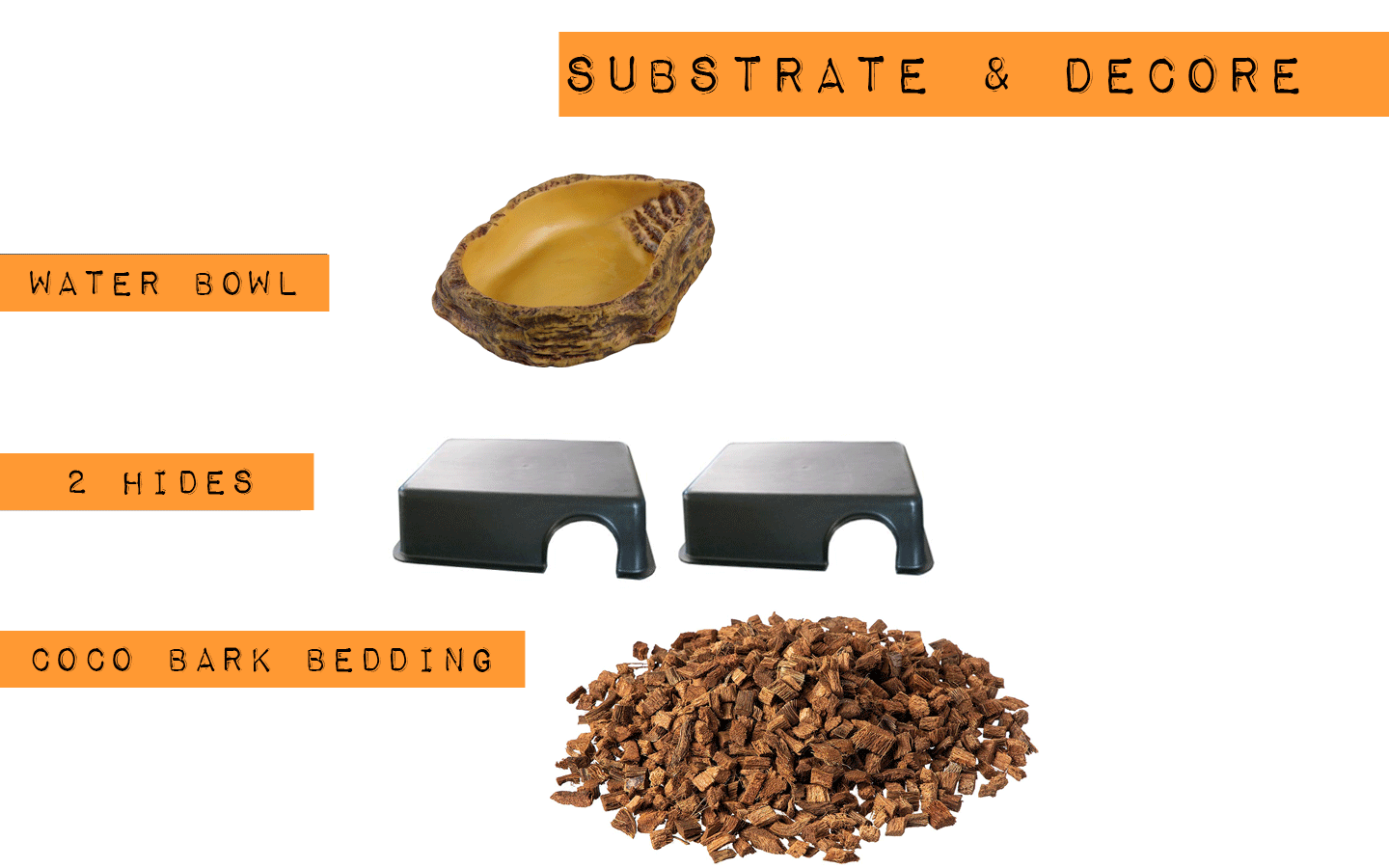
Step 4 Tools Of The Trade
Get a spray bottle and spray the enclosure every other day or so to provide Moisture and humidity. When you can tell that your snake is about to shed it’s a good idea to also spray your snake and under its hides to insure a good shed. We’d also suggest you get a temp gun to monitor the temperatures and tongs to use for feeding.
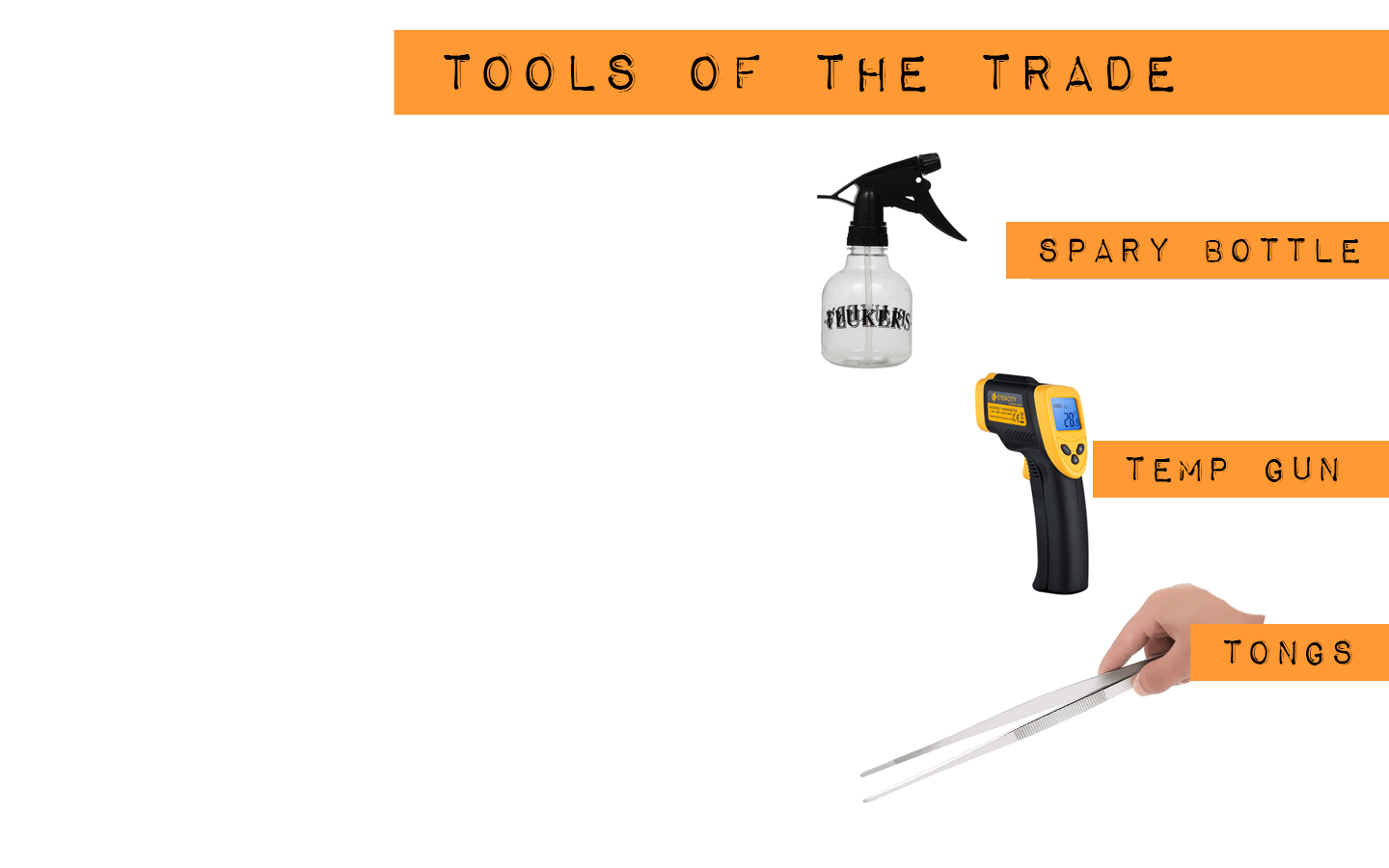
Step 5 Feeding
So we would recommend that you feed your ball python appropriate size rats every 7-10 days. A rule of thumb is to choose a rat that is slightly bigger than the thickest part of your ball pythons body. Whenever possible it is best to feed your ball python frozen thawed rats manly because there is a chance your snake can be injured by a live rat so keep that in mind. The best way we have found to thaw out rodents is to thaw out in cold water once fully thawed out remove cold water and add hot water to warm up the rats body but not so hot to cook it.
